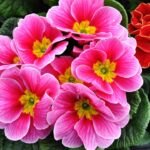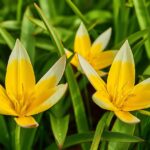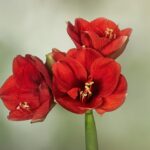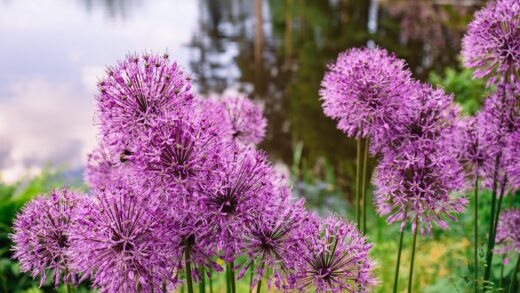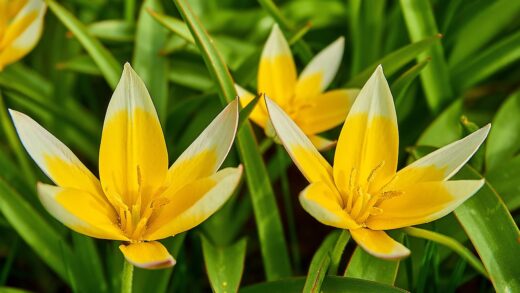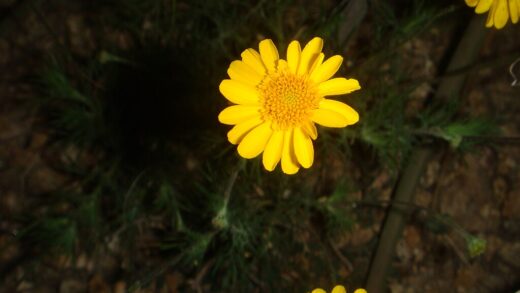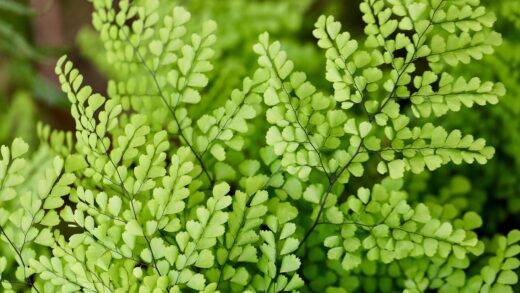The care of the slender parrot leaf

The slender parrot leaf, a vibrant and versatile plant, offers a spectacular display of colorful foliage that can elevate any garden design or indoor space. Its beauty, however, is not entirely effortless, as it requires a foundational understanding of its specific needs to truly thrive. Proper care involves a holistic approach, considering everything from the soil it is planted in to the air that circulates around its leaves. For enthusiasts looking to cultivate this stunning specimen, mastering the basics of its care is the first and most crucial step toward a healthy, flourishing plant. This journey begins with acknowledging that its vivid colors are a direct reflection of the quality of care it receives, making attention to detail paramount for success.
Successful cultivation starts with creating a suitable environment that mimics the plant’s native tropical and subtropical habitats. This involves more than just sporadic watering; it requires a consistent and observant approach to its daily conditions. The plant communicates its needs through the vibrancy of its leaves, its growth rate, and its overall posture, and a perceptive gardener learns to interpret these signals. Factors such as light, water, temperature, and nutrition all play interconnected roles in the plant’s well-being. Neglecting one aspect can quickly compromise the others, leading to a decline in health that may be difficult to reverse. Therefore, a proactive and informed care routine is essential.
Developing a consistent care schedule is fundamental to maintaining the health and vigor of the slender parrot leaf. This schedule should be adaptable, as the plant’s needs will change with the seasons and its stage of growth. For instance, a young, actively growing plant will require more resources than a mature one or a plant in its dormant winter phase. Regular observation is key to making these adjustments effectively. Taking the time each week to inspect the leaves, check the soil moisture, and assess the overall appearance of the plant will prevent minor issues from becoming major problems.
Ultimately, caring for the slender parrot leaf is a rewarding experience that deepens one’s connection to the natural world. It is a plant that gives back in proportion to the effort invested, rewarding diligent care with an ever-changing tapestry of brilliant colors. By committing to understand and provide for its essential requirements, you can ensure that this delightful plant remains a vibrant centerpiece in your collection for years to come. The principles of its care are not overly complex, but they demand consistency, observation, and a willingness to respond to the plant’s needs.
Soil requirements
The foundation of a healthy slender parrot leaf is the soil in which it grows, which must possess a specific combination of properties to support vigorous development. This plant thrives in soil that is rich in organic matter, providing a steady supply of essential nutrients for its lush foliage. At the same time, the growing medium must be exceptionally well-draining to prevent the roots from becoming waterlogged, a condition that can quickly lead to fatal root rot. A failure to provide adequate drainage is one of the most common mistakes in cultivating this species. Therefore, the ideal soil strikes a delicate balance between retaining enough moisture to keep the roots hydrated and allowing excess water to escape freely.
More articles on this topic
To achieve this optimal balance, a high-quality, all-purpose potting mix often serves as an excellent base. However, it is highly beneficial to amend this base mix to further improve its structure and drainage capabilities. Incorporating materials such as perlite, coarse sand, or fine pine bark can significantly enhance aeration and prevent the soil from becoming compacted over time. Compost or well-rotted manure are also excellent additions, as they enrich the soil with a diverse range of micronutrients and improve its overall texture. The goal is to create a light, friable substrate that allows the roots to penetrate easily and access both water and oxygen efficiently.
The pH of the soil is another critical factor that should not be overlooked, as it directly influences the plant’s ability to absorb nutrients. The slender parrot leaf prefers a soil environment that is slightly acidic to neutral, typically within a pH range of 6.0 to 7.0. Soils that are either too acidic or too alkaline can lock up essential nutrients, making them unavailable to the plant even if they are present in the soil. This can lead to nutrient deficiencies, which often manifest as yellowing leaves or stunted growth. A simple soil test kit can be used to determine the pH, and adjustments can be made by adding lime to raise the pH or sulfur to lower it, if necessary.
When planting in containers, it is absolutely essential to ensure the pot has ample drainage holes at the bottom. Without these, even the most perfectly formulated soil mix will become saturated, creating an anaerobic environment that suffocates the roots. It can also be beneficial to add a layer of gravel or broken pottery at the bottom of the pot before adding the soil, although this is a topic of debate among horticulturists. The primary principle remains unchanged: excess water must have an unobstructed path to exit the container. This simple but crucial step is non-negotiable for the long-term health of your slender parrot leaf.
Optimal temperature and humidity
As a plant with tropical origins, the slender parrot leaf has specific temperature preferences that are crucial for its survival and growth. It flourishes in warm conditions, with an ideal daytime temperature range between 18°C and 29°C. Consistently maintaining temperatures within this range encourages lush, vibrant foliage and a compact growth habit. The plant is particularly sensitive to cold and is not frost-tolerant. Exposure to temperatures below 10°C can cause significant stress, leading to leaf drop, discoloration, and potentially the death of the plant. Therefore, in regions with cold winters, it must be grown as an annual or brought indoors to a protected environment.
More articles on this topic
Sudden and drastic temperature fluctuations should be avoided, as they can shock the plant and impede its growth. It is important to position the plant away from areas prone to cold drafts, such as near doorways, windows that are frequently opened in winter, or in the direct path of air conditioning vents. Similarly, placing it too close to heat sources like radiators or fireplaces can cause the leaves to dry out and scorch. A stable environment where the temperature remains relatively consistent is key to helping the plant feel secure and expend its energy on producing beautiful leaves rather than on coping with environmental stress.
In addition to warmth, the slender parrot leaf thrives in an environment with moderate to high humidity, mirroring the moist air of its native habitat. Low humidity levels, which are common in many indoor settings, especially during winter when heating systems are in use, can be detrimental. Dry air can cause the leaf edges to turn brown and crispy, and may also make the plant more susceptible to pests like spider mites. Providing adequate humidity is therefore just as important as maintaining the correct temperature for the overall health and appearance of the plant.
There are several effective methods for increasing the humidity around your plant. Regularly misting the leaves with water can provide a temporary boost, but a more consistent solution is often needed. Placing the plant on a tray filled with pebbles and water is a popular technique; as the water evaporates, it creates a humid microclimate around the foliage. Using a room humidifier is another excellent and highly effective option, particularly if you are growing several tropical plants together. Grouping plants also helps to raise the ambient humidity, as they release moisture through the process of transpiration.
The importance of proper location
Selecting the right location for the slender parrot leaf is a critical decision that profoundly impacts its growth and the intensity of its foliage color. This plant is prized for its vibrant leaves, and the quality of light it receives is the single most important factor in developing these deep, rich hues. Generally, it performs best in a location that receives full sun to partial shade. In cooler climates, providing at least six hours of direct sunlight per day will encourage the most spectacular coloration. The direct exposure to sunlight fuels the production of pigments in the leaves, resulting in the brilliant reds, purples, and pinks for which the plant is known.
However, in extremely hot climates, some protection from the intense midday sun may be necessary to prevent the leaves from scorching or bleaching. In these regions, a spot that receives morning sun and dappled afternoon shade is often ideal. This provides the plant with enough light to develop its color without subjecting it to the stress of excessive heat and harsh ultraviolet rays. When grown indoors as a houseplant, it should be placed in the brightest possible location, such as near a south-facing window. Insufficient light will cause the colors to fade, and the plant may become leggy as it stretches towards the light source.
Beyond light considerations, the chosen location should also offer protection from strong winds. The stems of the slender parrot leaf can be somewhat brittle, and relentless wind can easily damage the foliage and even break the stems. Planting it in a sheltered spot, such as next to a wall, a fence, or among other taller plants, can provide the necessary protection. This is particularly important for plants grown in containers on balconies or patios, which can be more exposed to the elements. A sheltered location not only prevents physical damage but also reduces moisture loss from the leaves.
Finally, consider the plant’s mature size and growth habit when choosing its permanent home in the garden. While it is often grown as a low-growing, mounding annual, it can spread to create a dense ground cover. It is important to provide enough space for it to grow without overcrowding neighboring plants, which can lead to poor air circulation and an increased risk of fungal diseases. When used as an edging plant along a border or pathway, its placement should allow for its natural spreading habit while maintaining a tidy appearance. Proper spacing from the outset will prevent future problems and allow the plant to achieve its full decorative potential.
Air circulation and its role
Good air circulation is a frequently overlooked but vital component of successfully cultivating the slender parrot leaf. Proper airflow around the plant helps to prevent the onset and spread of many common fungal diseases, which thrive in stagnant, humid conditions. When leaves are densely packed and the air is still, moisture can linger on the foliage for extended periods after watering or rainfall. This creates the perfect breeding ground for pathogens like powdery mildew and fungal leaf spot. Ensuring that there is gentle movement of air around the plant helps to dry the leaves more quickly, significantly reducing this risk.
When planting in the garden, it is important to avoid overcrowding. Giving each plant adequate space allows air to move freely between them, which is crucial for maintaining plant health, especially in humid climates. Crowded conditions not only restrict airflow but also force plants to compete for light, water, and nutrients, leading to weaker, more disease-susceptible specimens. As a general rule, follow the spacing recommendations for your specific cultivar, which typically ranges from 15 to 30 centimeters apart. This ensures that even when the plants reach their mature size, there is still sufficient space for air to circulate.
For indoor cultivation, the principle of good air circulation remains just as important. A room with stagnant air can create an unhealthy environment for any houseplant, including the slender parrot leaf. While you should avoid placing the plant in the direct path of a strong draft from a fan or air vent, ensuring general room ventilation is beneficial. Occasionally opening a window to allow for fresh air exchange can make a significant difference. In some cases, using a small, oscillating fan set to a low speed in the room can help to gently move the air and mimic the natural breezes the plant would experience outdoors.
Proper pruning and thinning can also play a crucial role in improving air circulation within the plant itself. As the slender parrot leaf grows, it can become quite dense. Selectively removing some of the inner stems or leaves can open up the plant’s structure, allowing more air and light to penetrate the center. This not only helps to prevent disease but also encourages fuller, bushier growth throughout the plant rather than just on the exterior. This practice is particularly useful for plants that are being overwintered indoors or those grown in very humid environments where fungal issues are a persistent concern.
Container selection
Choosing the right container is a critical aspect of cultivating a healthy and attractive slender parrot leaf, especially when it is not being planted directly in the ground. The material of the pot is a primary consideration, with terracotta, plastic, and glazed ceramic being the most common options. Terracotta pots are porous, which allows for excellent air and moisture exchange through the walls of the pot. This helps the soil to dry out more evenly and reduces the risk of root rot, making it an excellent choice for this plant. However, it also means that the plant may require more frequent watering, particularly during hot, dry weather.
Plastic pots, on the other hand, are non-porous and retain moisture for much longer. This can be an advantage in some situations, as it reduces the watering frequency, but it also increases the risk of overwatering if you are not careful. If you choose a plastic container, it is even more critical to use a very well-draining soil mix and to check the soil moisture carefully before adding more water. Glazed ceramic pots are similar to plastic in that they are non-porous, but they are heavier and more stable, making them a good choice for larger specimens that might otherwise be top-heavy.
Regardless of the material, the single most important feature of any container is the presence of adequate drainage holes. Without proper drainage, water will accumulate at the bottom of the pot, creating a swampy environment that will inevitably lead to root suffocation and decay. One large hole may be sufficient for a small pot, but for larger containers, multiple holes are preferable to ensure that water can escape efficiently from all parts of the root ball. If a decorative pot lacks drainage holes, it should be used only as a cachepot, with the plant housed inside a separate, functional pot that has proper drainage.
The size of the container is also a key factor in the plant’s health. It is important to choose a pot that is proportional to the size of the plant’s root system. A pot that is too large can hold an excessive amount of soil, which may stay wet for too long and increase the risk of root rot. Conversely, a pot that is too small will restrict root growth, causing the plant to become root-bound and stunting its development. A good rule of thumb is to choose a pot that is about 2 to 5 centimeters wider in diameter than the plant’s current root ball, and to repot the plant into a slightly larger container every one to two years as it grows.
Long-term health monitoring
Maintaining the long-term health of a slender parrot leaf requires more than just following an initial care routine; it demands ongoing observation and a willingness to adapt to the plant’s changing needs. Regular inspection is the cornerstone of proactive plant care. At least once a week, take the time to look closely at your plant from all angles. Examine the tops and undersides of the leaves for any signs of pests, such as webbing from spider mites or the sticky residue left by aphids. Look for any discoloration, spots, or wilting, as these are often the first indicators of an underlying issue, whether it be a disease, a nutrient deficiency, or a watering problem.
It is also important to monitor the plant’s growth pattern over time. A healthy slender parrot leaf should exhibit steady, compact growth. If you notice that the stems are becoming unusually long and sparse, with large gaps between the leaves, this is a classic sign of insufficient light, a condition known as etiolation. In this case, the solution is to move the plant to a brighter location. Conversely, if the growth seems stunted or the new leaves are very small, it could indicate that the plant is root-bound and needs to be repotted, or that it is not receiving enough nutrients from the soil.
Pay close attention to the soil surface and the overall condition of the growing medium. Over time, salts from fertilizers and tap water can build up in the soil, appearing as a white, crusty layer on the surface. This buildup can be toxic to the plant’s roots and interfere with water absorption. To prevent this, it is a good practice to periodically flush the soil by watering the plant thoroughly until water runs freely from the drainage holes for several minutes. This helps to leach out the excess salts and refresh the soil environment.
Finally, be prepared to adjust your care practices with the changing seasons. The needs of a slender parrot leaf in the active growing season of spring and summer are very different from its needs during the cooler, shorter days of autumn and winter. During the growing season, it will require more frequent watering and regular fertilization to support its rapid development. In the winter, however, its growth will slow down significantly, and its requirements for water and nutrients will decrease accordingly. Overwatering and over-fertilizing during this dormant period are common mistakes that can lead to serious health problems. Being attuned to these seasonal shifts is essential for successful long-term care.
📷 Flickr / Szerző: cultivar413 / Licence: CC BY 2.0








